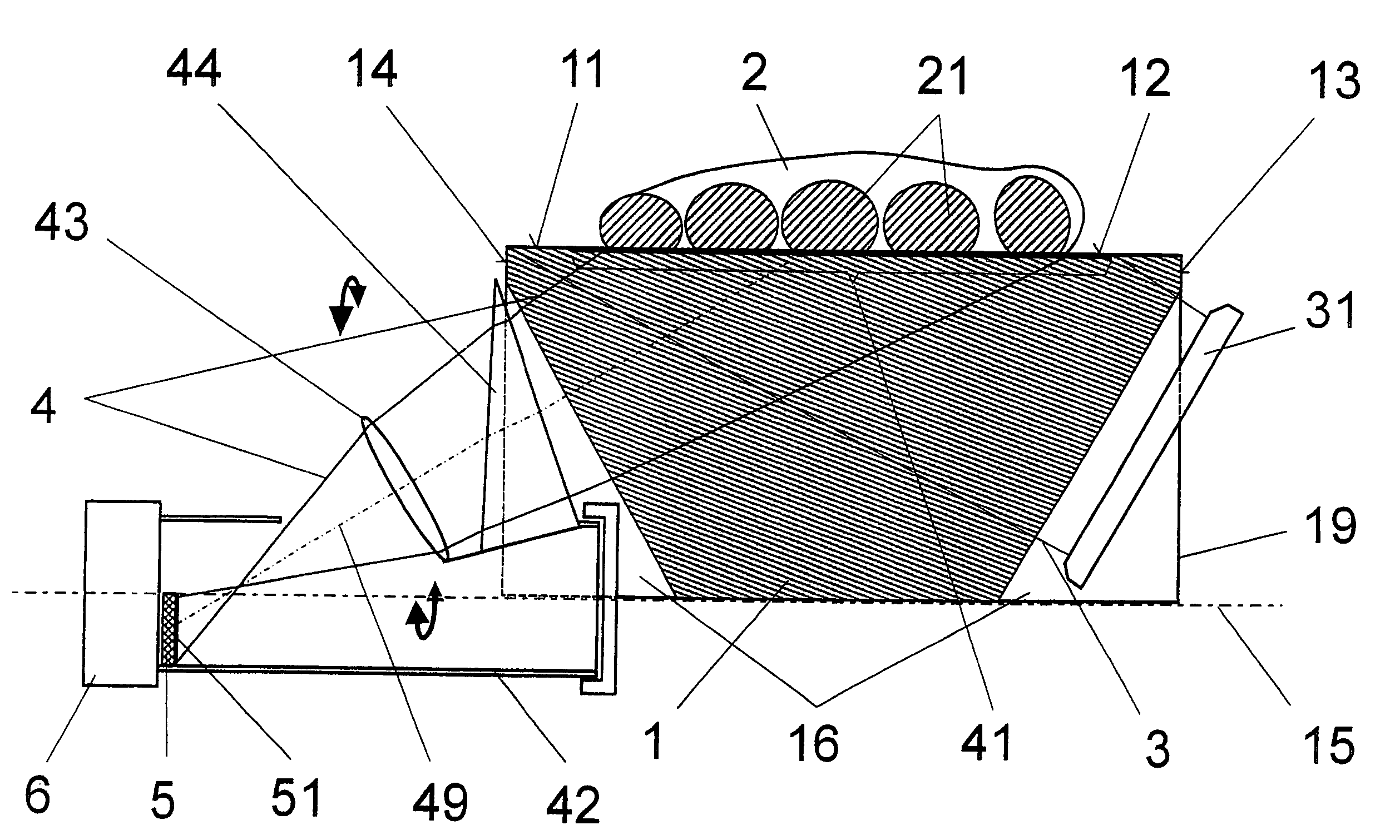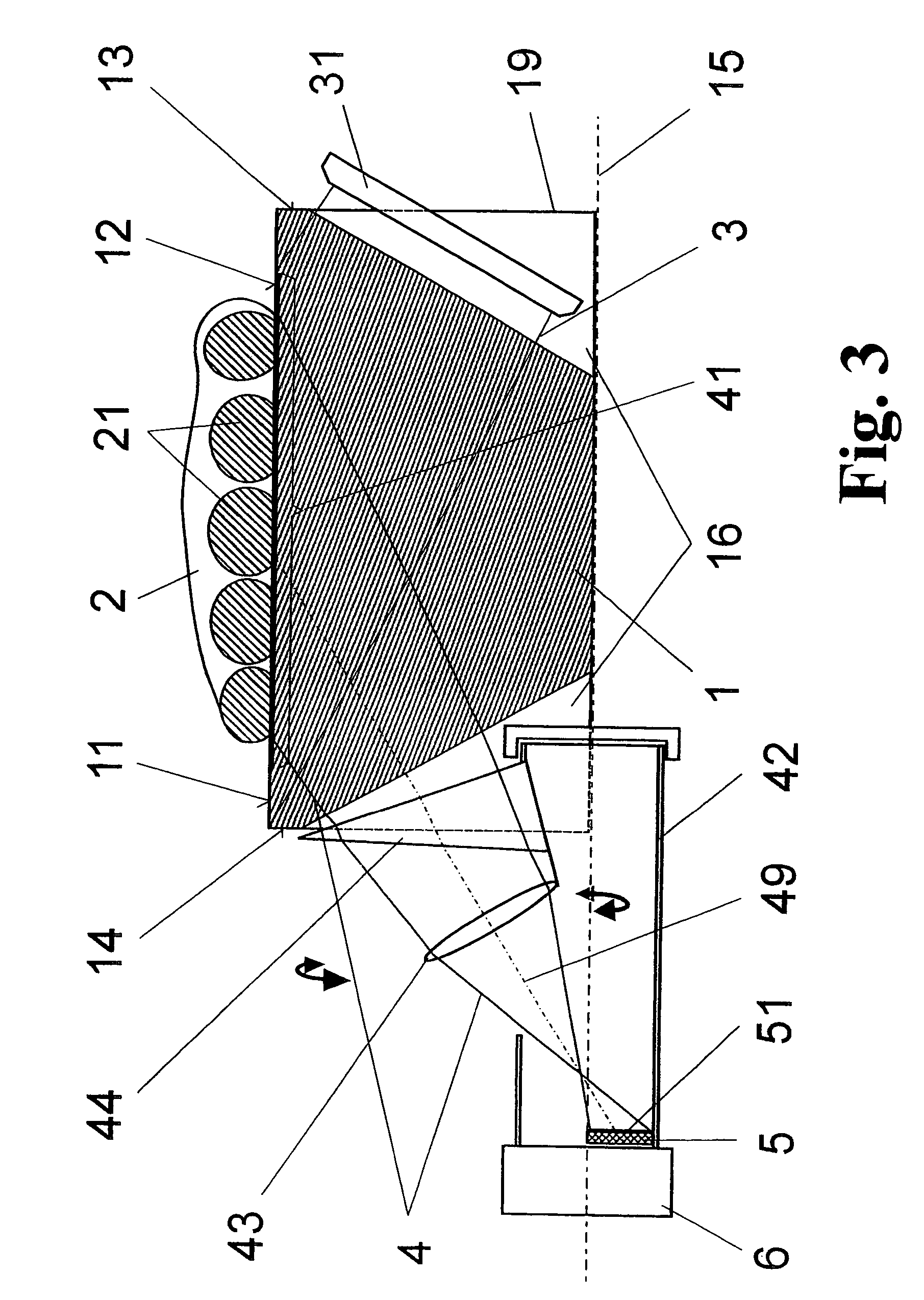Arrangement for the optoelectronic recording of large-area fingerprints
an optoelectronic and fingerprint technology, applied in the field of optoelectronic recording of large-area fingerprints, can solve the problems of difficult evaluation, inability to reliably achieve the quality necessary for applications of this kind, and inability to correctly gather the output imag
- Summary
- Abstract
- Description
- Claims
- Application Information
AI Technical Summary
Benefits of technology
Problems solved by technology
Method used
Image
Examples
Embodiment Construction
[0046]As regards its basic construction, the invention contains, as the core of the optoelectronic recording device, a specially constructed optically transparent support body as is shown in FIG. 1 for recording large-area prints of skin parts of the fingers 21 or of the entire hand 2 (only in FIG. 2). This cylindrical support body 1 is made of optical material (glass or plastic) in which at least a portion of the outer surface area 11 is provided as a support surface 12 for the hand 2 in such a way that the concave palm of the hand snugly contacts the outer surface 11 of the scanning body 1.
[0047]Conical recesses 16 are arranged coaxial to the cylinder axis 15 in the two end faces 13 of the body 1 for coupling in the illumination beam path 3 on the one hand and for coupling out the imaging beam path 4 on the other hand so that the frustrated (because of the hand placed thereon) total reflection (FTIR) of a strip 41 (see FIG. 9 or FIG. 10) along a lateral line of the outer surface 1...
PUM
 Login to View More
Login to View More Abstract
Description
Claims
Application Information
 Login to View More
Login to View More - R&D
- Intellectual Property
- Life Sciences
- Materials
- Tech Scout
- Unparalleled Data Quality
- Higher Quality Content
- 60% Fewer Hallucinations
Browse by: Latest US Patents, China's latest patents, Technical Efficacy Thesaurus, Application Domain, Technology Topic, Popular Technical Reports.
© 2025 PatSnap. All rights reserved.Legal|Privacy policy|Modern Slavery Act Transparency Statement|Sitemap|About US| Contact US: help@patsnap.com



